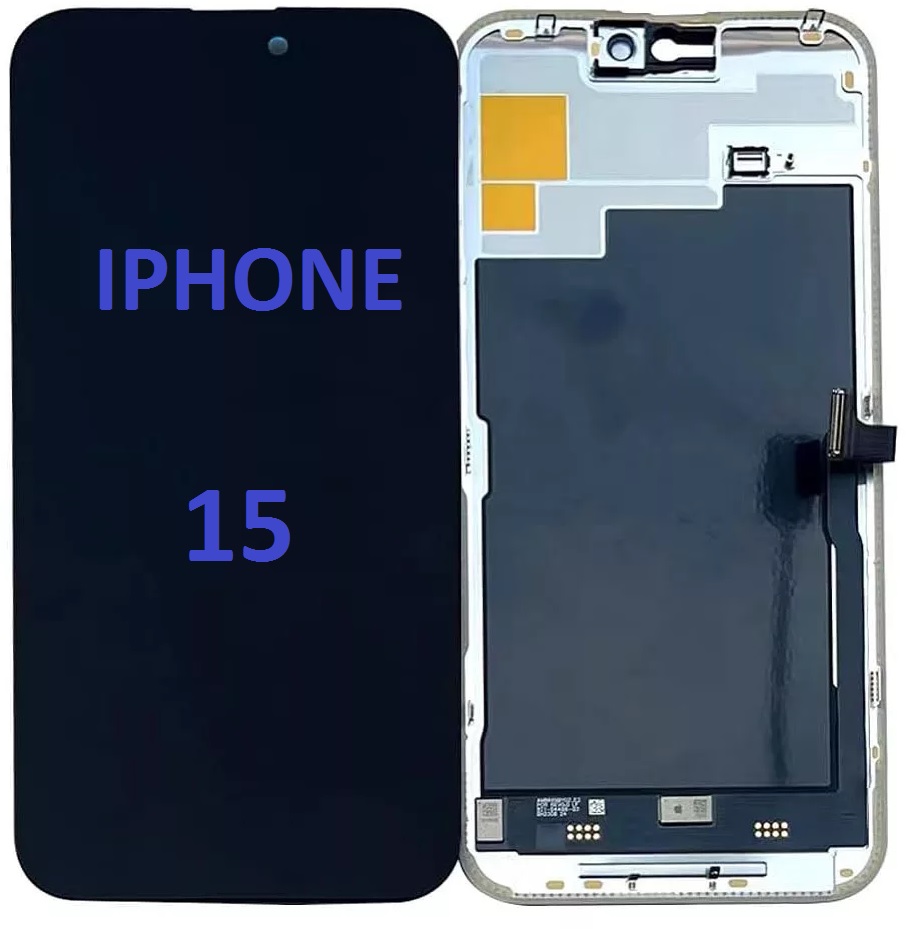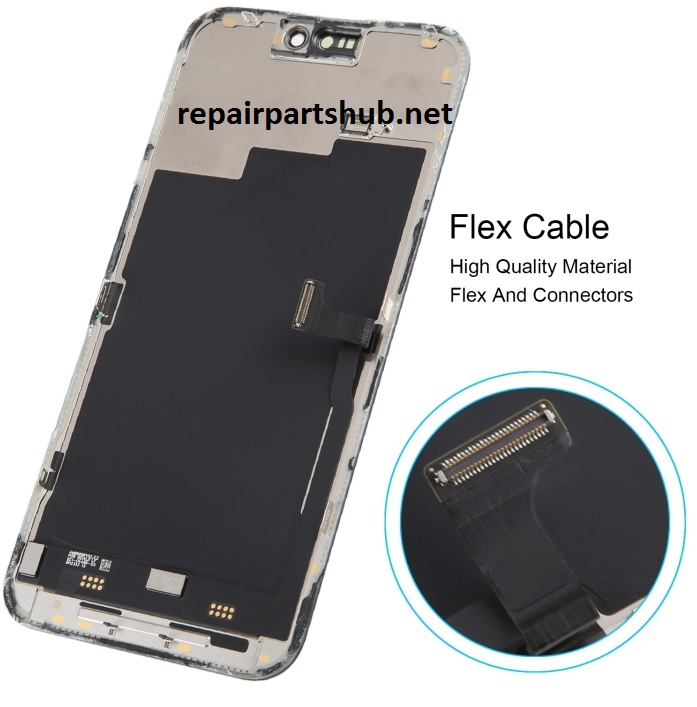
iPhone 15 LCD Screen Replacement Overview
The iPhone 15, released by Apple in September 2023, continues Apple’s tradition of offering high-quality smartphones with advanced display technologies. While the iPhone 15 uses a Super Retina XDR OLED display rather than the older LCD technology, understanding the general approach to screen replacement can be useful for users looking to repair their devices.
iPhone 15 Display Details:
- Display Type: Super Retina XDR OLED
- Display Size: 6.1 inches (diagonal)
- Resolution: 2532 x 1170 pixels at 460 ppi (pixels per inch)
- Brightness: 800 nits (typical), 1200 nits (peak)
- True Tone: Yes
- HDR Support: Dolby Vision, HDR10
- Color Gamut: P3 wide color
- Glass Type: Ceramic Shield front cover
LCD vs OLED Display
While many older iPhone models used LCD screens, the iPhone 15 utilizes an OLED display, which offers better contrast ratios, deeper blacks, and higher brightness. OLED displays are different from traditional LCD screens, but some principles in the replacement process remain similar.
Replacing an OLED (or LCD) Display:
Screen replacement requires a delicate process involving several steps, tools, and expertise to ensure that the phone continues to function as intended after the replacement.
Step-by-Step iPhone 15 Screen Replacement Process
1. Preparation:
- Tools Needed: Pentalobe screwdriver, suction cup, plastic pry tools, heat gun, tweezers, adhesive strips, and a new OLED screen.
- Backup Your Data: Before you begin, it’s essential to back up your data to avoid any loss.
- Power Off the Device: Turn off the iPhone to prevent any electrical damage during the repair.
2. Removing the Broken Screen:
- Apply Heat: Use a heat gun to soften the adhesive securing the screen. This will make it easier to detach the screen without damaging it or the internal components.
- Use a Suction Cup: Attach a suction cup to the screen to gently lift it. Once the screen begins to separate, insert a plastic pry tool into the gap and carefully work your way around the screen.
- Disconnecting the Battery: Once the screen is partially removed, disconnect the battery to avoid any short circuits.
3. Detaching the Display:
- Remove Screws: The display will be held in place with screws and clips. Use a pentalobe screwdriver to remove any screws and plastic clips securing the screen in place.
- Disconnect the Display Cables: The iPhone 15 screen has several cables that connect it to the motherboard. These must be carefully disconnected using a plastic tool to avoid damaging the fragile connectors.
4. Installing the New Screen:
- Prepare the New Display: If your replacement screen doesn’t come with adhesive, apply fresh adhesive strips to the edges of the new screen.
- Connect the Cables: Reconnect the display cables to the motherboard, making sure they are properly seated.
- Align and Attach the Screen: Once everything is in place, carefully align the new screen with the body of the phone. Press down gently to secure it in place.
- Reassemble: Replace any screws or clips that were removed earlier.
5. Testing and Finalizing:
- Power On the Device: Turn on the iPhone and check if the display works properly. Test the touch functionality, brightness, color accuracy, and screen responsiveness.
- Seal the Phone: Once you’re sure everything is functioning well, seal the device back up with the screws and clips.
iPhone 15 Screen Size and Features:

The iPhone 15 boasts a 6.1-inch Super Retina XDR OLED display. OLED screens provide significant improvements over LCD displays, especially in color accuracy, contrast, and brightness. The high resolution and color accuracy make it an ideal screen for media consumption, gaming, and general use.
- Size: The 6.1-inch display size is standard for many recent iPhone models, offering a balance between portability and screen real estate.
- Resolution: With a resolution of 2532 x 1170 pixels at 460 ppi, the display offers sharp text and detailed images, perfect for all types of content.
- Brightness: The display reaches up to 1200 nits of peak brightness, making it highly visible even in bright outdoor environments.
Common Issues with iPhone 15 Display:
- Cracked or Broken Screens: Physical damage from drops is one of the most common reasons for screen replacement.
- Screen Burn-In: Though rare with OLED screens, burn-in can still happen if static images are displayed for too long.
- Display Malfunctions: Sometimes, users experience issues like unresponsiveness, discoloration, or flickering. These can be caused by hardware failures and may require a screen replacement.
Tips for Preserving Your Screen:
- Use a Screen Protector: Prevent scratches and minor cracks by applying a high-quality screen protector.
- Use a Case: A good case will help absorb shocks from drops, preventing damage to the screen.
- Avoid Extreme Conditions: Excessive heat, humidity, or exposure to sunlight can damage the screen over time.
- Be Mindful of the Display’s Brightness: Keeping the brightness too high for extended periods can degrade the display’s lifespan.
Final Thoughts:
Replacing the screen on an iPhone 15, whether it’s due to a cracked display, malfunctioning pixels, or any other issue, requires precision and care. While the iPhone 15 does not use LCD technology, understanding the process for screen replacement is vital. Be sure to use high-quality replacement parts, and if you’re unsure of your skills, it’s advisable to take the phone to a professional repair service to avoid further damage.
Let me know if you’d like more details on any part of the process or other information related to the iPhone 15!